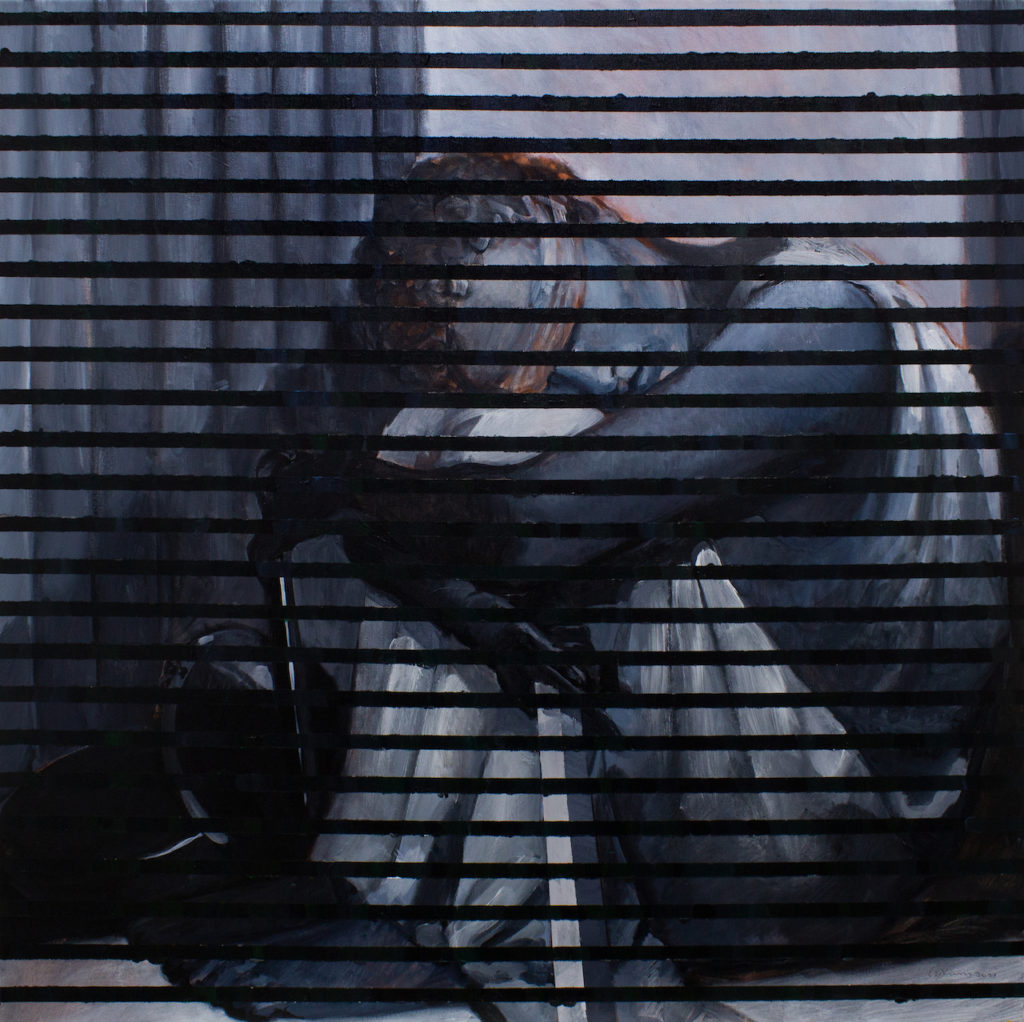Photos courtesy of Saskia Fernando Gallery
Chandraguptha Thenuwara’s 24th annual Black July memorial exhibition is titled “Blinds”.
Most of us spent more time looking out of the windows of our homes this last year than in any other year. So it is perhaps no surprise that one of the works in Chandragupta Thenuwara’s latest exhibition, simply titled Landscape, is a meditation out of the artist’s studio in his home. The effects on the artist of a year spent in and out of lockdown may be why this most recent selection of works feels particularly intimate, even vulnerable. With widely ranging subjects from the Madonna to Themis and Ruwanweliseya to China, the works are united by the ways they underscore humanity’s mistakes and weaknesses. While Lamenting Themis is sober-hued, the image of Madonna is titled Hope and she is seen against a gleaming gold backdrop. Yet one wonders what the gold signifies – through Thenu’s deft marriage of figurative and the abstract depictions, the painting merges foreground and background and we are not sure if the figures in the painting have become part of the abstraction of if they are merely concealed beneath it.
The blinds running through the entire series of works in this exhibition are not mere screens, partially obscuring the “real”. They are part of that reality, part of its narrative. They ask us to look closely and from afar. They remind us that our perceptions are tied to our own position in time and space. Gold Square optically vibrates through a range in values of the blues, greens and browns comprising its alternating striations. In this work, we do not know which layer conceals which. In Glitch, a monochrome work, the layers appear to merge. The recursive themes in Thenu’s oeuvre are suggested through this painting, given his longstanding interest in the notion of the glitch.
The glitch, like blinds, speaks to the mediated qualities of vision, and by extension, understanding. In The Newsreader, the bright acrylic shades over the portrait are in stark contrast to the painting’s subject, a murdered journalist. In The White Line triptych, the visual noise reminds us of electronic media and yet retains the sense that this is a man-made glitch thereby remaining informative even as noise. To quote Marshall McLuhan’s “The Medium is the Message,” or perhaps as the book (mistakenly) ended up being titled, “The Medium is the Massage.” A glitch very much along the lines of Thenu’s sense of humour.
Thenu uses his humour to appeal to us to look closer and to look wider. He returns to his reference of Magritte’s “Cest ci n’est pas une pipe/This is not a pipe” phrase to remind us of The Treachery of Images. Building on previous works This is not a White Flag and This is not White, Thenu insists that we question perceptions. In this exhibition, This is not a Pollock, a large format work on aluminium reminds us that an artist’s work is not just a matter of technique.
Although he is formally trained as a painter, Thenu’s oeuvre includes many three-dimensional works. This exhibition is remarkable in that it is constituted entirely of paintings, and yet they are not wholly two-dimensional. Impasto voxels in White Line No. 1 and The Pandol push back through the blinds, which here we can read as being the contrasting lines with flattened paint application. Through this subtle gesture Thenu suggests the agency of the reality beyond those blinds, whether they are metaphorical or physical.
In Waterbody, two crimson waterlilies peek through the blinds. Previous depictions of the flower by Thenu, like Waterlilies in 2006, hinted at the symbolism of the flower and its ties to national identity (the purple water lily is Sri Lanka’s national flower). In this work, once more a view from the artist’s home, the landscape unites the seemingly incompatible qualities of being vivid and murky on one canvas. Amazingly, this is the sense I glean from these paintings, a notion the events of this exceptional year have driven home; what is out there is muddy and uncertain, but it still glimmers with hope.
Shayari de Silva is an architect whose practice focuses on curatorial and editorial projects. She is the Curator of Art and Archival Collections at the Geoffrey Bawa Trust.
